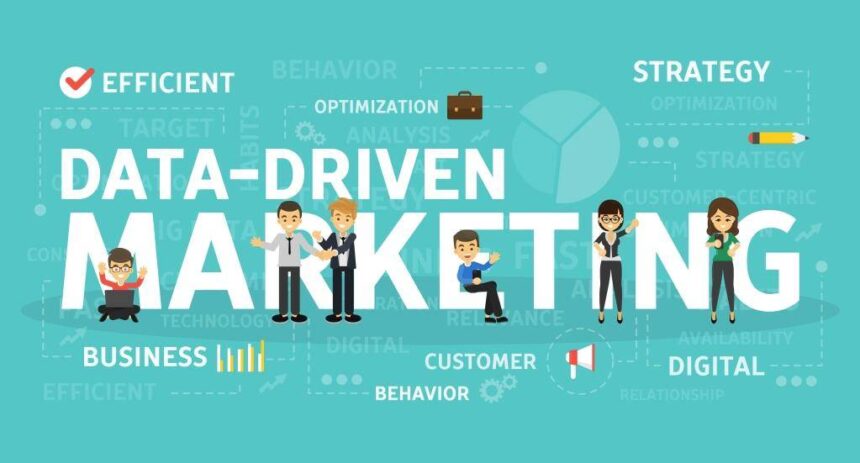According to a recent Adobe report, marketers have identified data-driven marketing as the most important business opportunity for 2019. That clearly indicates the importance that marketers give to data and why you should too.
After all, data-driven marketing can help you achieve numerous benefits for your business, ultimately leading to an increase in conversions. If your marketing initiatives are backed by data, they will have much higher success rates. And, that, in turn, will lead to an increase in conversions.
There are a lot of potential sources of data that are easily accessible for most businesses. In this post, we will not only discuss where to get the data but also how to leverage it for your business success.
Here are five ways in which you can leverage data-driven marketing to improve your conversion rate and drive business growth.
1. Use Audience Insights for Campaign Planning
The first way in which you can leverage data to improve your marketing efforts and, eventually, conversions is to use customer insights. If you understand your current audience/customers, you can plan targeted marketing campaigns intended for a more relevant audience. The more targeted your campaigns are, the more effective they will be at driving conversions.
You can gather these insights from a variety of sources like social media, surveys, customer online behavior tracking, etc. You can also directly ask your customers for feedback to understand their preferences better. Analyzing your customer support interactions can also provide insights into the challenges faced by your existing customers.
You can leverage all these sources to understand and segment your target customers. Then use that knowledge to design your marketing campaigns aimed at targeting these target customer segments.
2. Use Past-Performance Data for Marketing Spend Allocation
The next type of data that you should be looking at to fuel your marketing campaigns is the past-performance data of your campaigns. By understanding what worked for you and what didn’t, you can optimize your future marketing strategy and spend allocation.
Using these insights, you can decide which marketing activities to spend your resources on. By optimizing your marketing spend, you can focus your efforts on the most effective marketing strategies. This, in turn, will improve conversions, which is the ultimate goal of marketing.
Here are some of the sources from where you can gather this data.
Social Media Analytics
Almost all social media platforms have some form of built-in analytics tools that provide information on your account’s performance. You can gather insights on what type of content works well for your audience, the best times to post, the best messaging strategy, etc.
Email Marketing Analytics
For your email marketing campaigns, you can use third-party email marketing tools like MailChimp as they have analytics features. You can also leverage URL generating and tracking tools like UTM.io. Either of these types of tools can provide you with performance metrics like open rates, click rates, and more.
Other Campaign Tracking Metrics
For any other type of marketing campaign, there are tools available that can help you measure performance. From influencer marketing campaign management to content marketing tools, you can gain performance insights from all.
3. Leverage Website Analytics Data for SEO
Website analytics is another useful source of data that can help improve your marketing strategy and conversions. Google Analytics is one of the best tools for accessing this data for your website. It also provides conversion tracking data for your website, which could be used to identify pages that are lagging behind.
You can find out which landing pages are driving visitors away, where people are spending the most time, which CTAs are working, etc. You can use these insights to improve your website and make it SEO-friendly.
For example, if a particular page has a high bounce rate, you can optimize it to improve user engagement. Or, if some landing pages are not getting enough traffic, you can use SEO techniques to generate more traffic for them.
4. Conduct A/B Tests for Conversion Rate Optimization
A/B testing is a technique that most expert marketers use to gain insights into what elements of their websites or ads work best. A/B tests provide valuable data that can help you improve your website’s conversion rates.
You can use it to optimize headlines, colors, images, page designs, CTAs, ad copy, and a lot more. If you conduct split testing regularly, you’ll understand how to direct your leads down the funnel more effectively.
The data gathered from A/B testing helps you design better landing pages, ads, and place clear and strong CTAs that drive conversions. You can conduct A/B tests simply by using Google Optimize and can get the data directly from your Google Analytics account.
A/B testing your ad campaigns is also very beneficial for improving your campaign performance and generating more leads. Split testing can tell you which type of ads get more clicks and you can use these insights to design future ads. This way, your ad campaigns will become more and more effective at generating leads.
5. Understand Industry Trends and Apply Them to Your Business
Apart from the data that you can gather about the different aspects of your business, you should also look at market data and industry trends. Knowing the latest industry trends can help fuel your marketing strategy. You can leverage these trends to gain a competitive advantage over your peers.
Social media listening is one way to gather insights into market trends. You can understand the latest topics that are trending and include them in your content strategy.
It can also help you understand the consumer sentiment around your brand and how it changed before and after a campaign. If people react positively to your marketing campaigns, then you need to continue executing similar campaigns.
Conclusion
Not leveraging data to back your marketing strategy is like going to the battle unarmed, it just doesn’t work. You need to back your initiatives with credible data and insights to get the best out of them.
This is why successful marketers swear by data-driven marketing and the benefits you can derive from it. It can help you plan more targeted campaigns that get better results than generic ones. This, in turn, can improve your overall conversion rates from different sources.
Use the data sources and ways to leverage them mentioned in this post to see the results for yourself. If you have any queries on this topic, feel free to ask us and we would love to help you.







